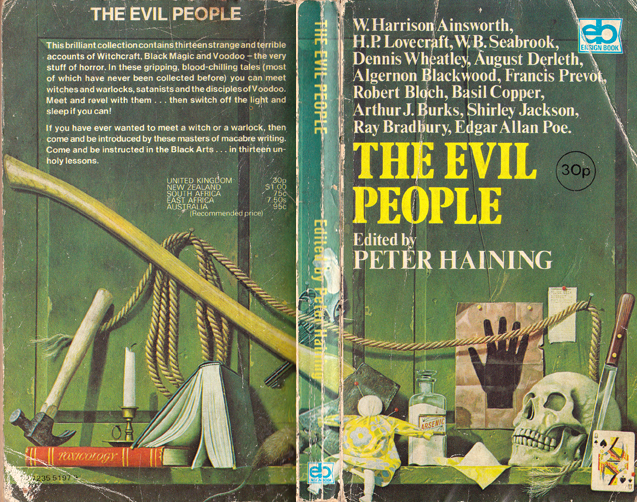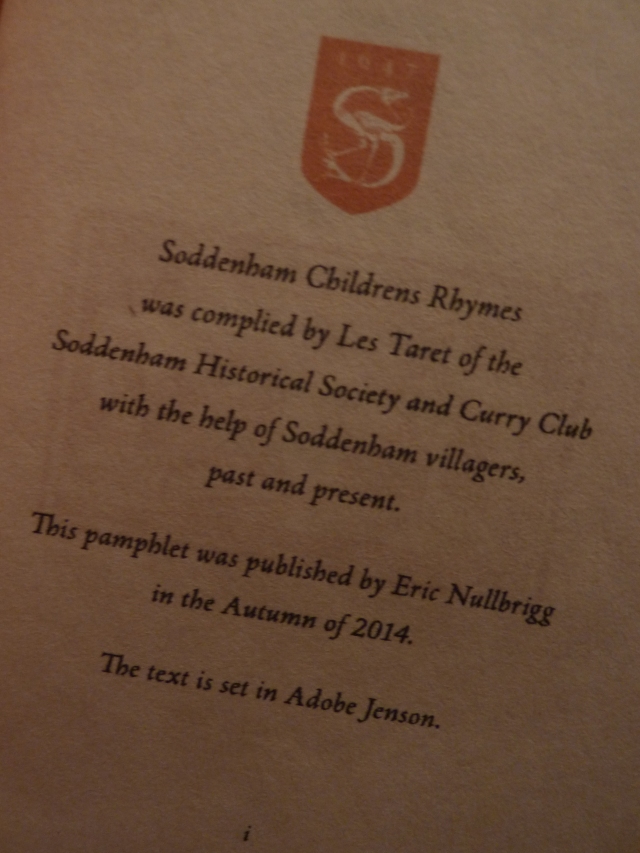Published in 1984, this is quite a late anthology in my collection, hence the photographed cover imagery rather than the garish illustrations we’re used to from the ‘60s and ‘70s. And what a cover it is in all its wraparound glory! You can’t help but wonder just who these people are. You wouldn’t think that they would have gone to the expense of hiring models or actors for such a tawdry affair, so are they friends and family of the editors? Staff of the publishing house? Who knows?
The editor, Kurt Singer, was quite a guy by all accounts. He was born in Austria and raised in Berlin. He witnessed the rise of the Nazi regime and fought against it by publishing an underground anti-Nazi newspaper. A price was put on his head and he fled Germany in 1933 to become a spy and journalist first in Sweden and later in the US. He spent his life writing books and giving lectures on WWII and espionage. He also wrote many biographies and, luckily for us, edited several horror short story collections.
C O N T E N T S
The Plague of the Living Dead – A. Hyatt Verrill
The Mask – Robert W. Chambers
The Affair at 7 rue de M… – John Steinbeck
Under the Hau Tree – Katherine Yates
The Strange Ride of Morrowbie Jukes – Rudyard Kipling
The Abyss – Robert A. W. Lowndes
Fever Dream – Ray Bradbury
Spawn of the Green Abyss – C. Hall Thompson
H I G H L I G H T S & L O W L I G H T S
The Plague of the Living Dead – A. Hyatt Verrill
The first and titular tale in the collection is an interesting piece, it reads like an embryonic form of the modern zombie story. Of course, with authors like W. B. Seabrook, the Haitian voodoo breed of zombie was becoming quite the fashion in the 1920s and 30s but Verrill’s is quite a different beast. First published in the magazine Amazing Stories in 1927, this is a story about a disgraced biologist who, after being ridiculed in the press for his experiments in immortality, exiles himself to a remote volcanic island to continue his work. Unfortunately for the islanders he partially succeeds and the dead are soon rampaging through the local community.
Verrill never once mentions the Z word in this story but it could well have paved the way for later works. There is an obvious similarity in the title with Romero’s series of films and the island setting gives it a certain Lucio Fulci feel.
The Mask – Robert W. Chambers
Chambers is far too important to have a brief summary of his work here. In fact, I’m not sure how well his stories work as stand-alone pieces in anthologies like this or whether they should always be read in context with his other ‘King in Yellow’ stories. I think he deserves an entire post to himself.
The Affair at 7 rue de M… – John Steinbeck
John Steinbeck, you say? In a cheap and tawdry horror anthology? What is the literary world coming to? Here Steinbeck offers us a tale concerning a haunted (or should that be possessed?) piece of……errrrr……try to keep a straight face……..look, it’s a story about a haunted piece of bubblegum.
And that’s all I have to say about that.
The Strange Ride of Morrowbie Jukes – Rudyard Kipling
This is one of Kipling’s early tales, he was just nineteen when he wrote it. It appeared in his 1888 collection The Phantom Rickshaw, alongside his famous The Man Who Would be King. This is a brutal and hallucinatory journey of an English engineer in India who, suffering from a fever, rides his horse after a pack of dogs and falls, horse and all, into a large sandtrap which is impossible to escape from. To make matters worse it is inhabited by a colony of Indians who have all been exiled from their communities due to serious illnesses of one sort or another. The place becomes a limbo or purgatory and we’re never sure whether it is real or part of the narrator’s fever dream.
The Abyss – Robert A. W. Lowndes & Spawn of the Green Abyss – C. Hall Thompson
Singer treats us to not one, but two Lovecraft inspired pieces here, I think the word ‘abyss’ in both titles give the game away. They are both replete with all the expected Yogsothery, Lowndes even introduces us to a new a tome to add to the Mythos, The Song of Yste.
It’s interesting to see how two pieces of, what are essentially, author-sanctioned fan fiction can be so different.
With his 1941 piece Lowndes’ gives us a contemporary tale written in a modern voice, he’s taken the essence of Lovecraft’s mythos and made it his own. It has a quite a hard-hitting noirish opening paragraph and continues in the same style:
We took Graf Norden’s body out into the November night under the stars that burned with a brightness terrible to behold and drove madly, wildly, up the mountain road. The body had to be destroyed because of the eyes that would not close, but seemed to be staring at some object behind the observer, the body that was entirely drained of blood without the slightest trace of a wound, the body whose flesh was covered with luminous markings, designs that shifted and changed form before one’s eyes.
However, Thompson’s later piece (first published in Weird Tales in 1946) is a rather dated, gothic affair and reads more like a pastiche of Lovecraft. It’s a rollicking enough tale of doomed love and inter-dimensional aquatic cross-breeding but Thompson is one of those writers of the “why use one adjective when half a dozen will do” school of thought, which makes the read a bit like wading through a cloyingly fetid, noxiously stygian, eldritch swamp.
An example:
Heath was never quite certain about the island. It seemed probable that the Macedonia had run aground on the pinpoint of land that rose like a monstrous medusa from the mauve-green depths of the sea, yet Heath had never been aware of the existence of such an island; it was marked on none of the charts drawn by human hands. At a moment’s notice, it had seemed to rear itself into the cotton-wool fog off the port bow of the ship. The water lapping at its fungus-clotted shores gurgled insanely as it swallowed the last of the Macedonia…
The tale is set in a small and forgotten coastal town called Kalesmouth. There is a shadow over Kalesmouth and it’s the shape of a disgruntled H.P. Lovecraft wondering if he did the right thing in encouraging all these fanboys.






